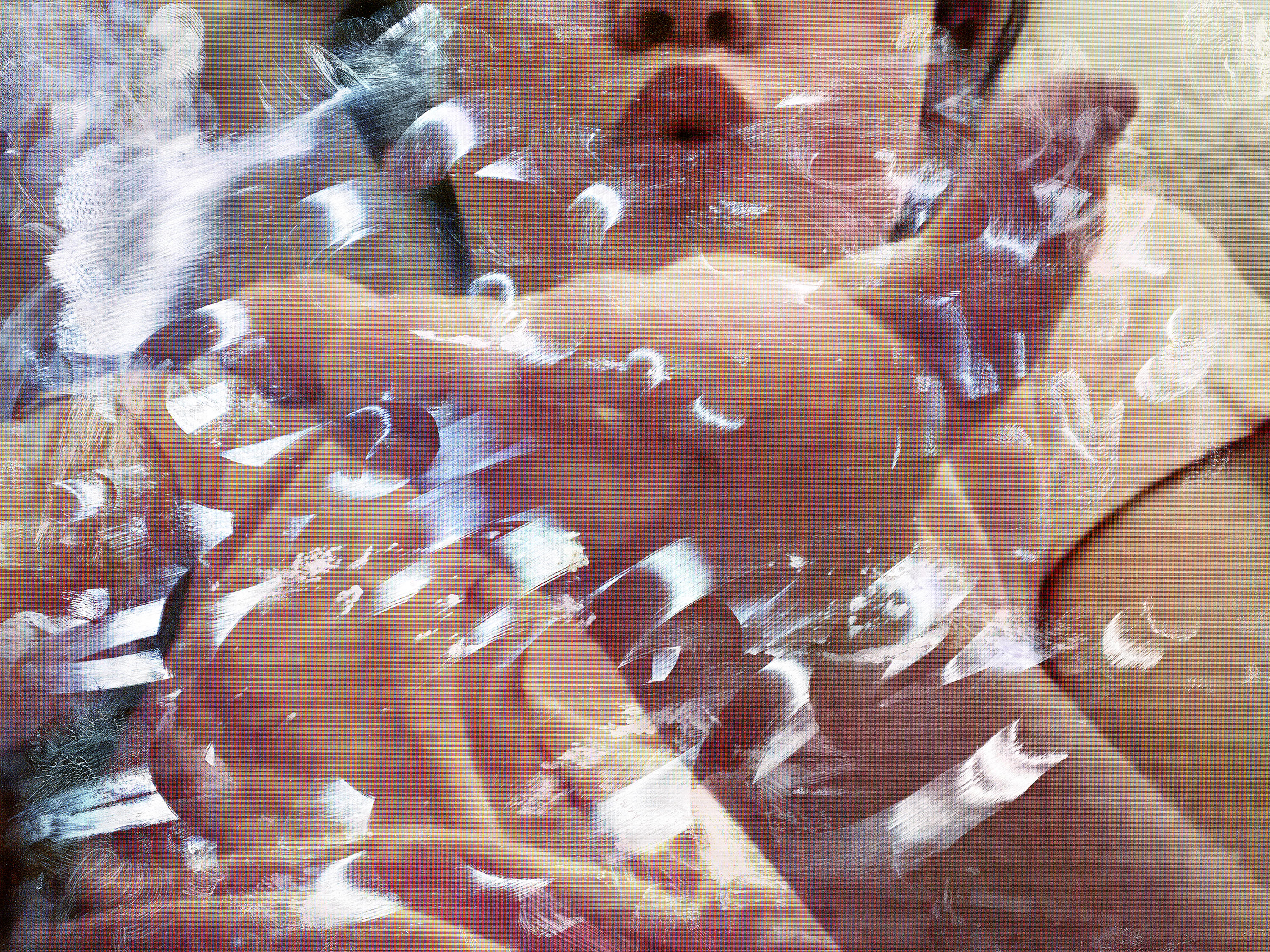Last Updated on 01/20/2019 by Mark Beckenbach
All images © Tabitha Soren 2018. Used with permission
Our relationship with technology and devices is a tricky one. They’re supposed to make our lives easier, pamper us with convenience, and entertain us for as long as we need it. But at their worst, they become a constant source of distraction, discontent, and distress. Photo-based artist Tabitha Soren offers a unique view into this reality with a thought-provoking new series. Titled Surface Tension, this body of work shows us how greasy fingerprints and smears serve as evidence that we spend much of our lives glued to our screens, tapping and swiping away in an unnoticed “dance of fingers.”
To find out more about this series, we got in touch with Soren ahead of the opening of her show for Surface Tension, running from February 7 to June 9, 2019 at the Davis Museum at Wellesley College, in Wellesley, Massachusetts. She tells us about the inspiration behind the project, what her process was like, and why fingerprints and smears on screens were perfect for delivering her message.
Phoblographer: Hello Tabitha! Can you tell us something about yourself and what you do?
Tabitha Soren: I’m a photo-based artist who works in Berkeley CA. Making photographs has been my main occupation for the past 15 years. My first career was in journalism and the work I did at MTV News got a lots of attention in the 90s (perhaps more than it deserved). I interviewed many high profile figures during my tenure there, including Hillary Clinton, Tupac Shakur, Anita Hill, and Yasser Arafat, among others. My presidential political reporting for MTV News’ “Choose Or Lose” campaign was awarded the prestigious Peabody Award in 1993.
My work now is much more about emotional truth– not merely the who what where and why of the news business. My art work speaks to the twists of fate in life that can unhinge us. Whether it’s disquieting images of people in mid-fight or flight in the Running series,or in the tribute to panic attacks in my oceanscape series Panic Beach, I am most interested in what human beings can survive – and what they can’t. I hope my images function like invitations to the viewers’ emotional memory.
Phoblographer: How did you get into photography and discover the kind of imagery that you make now?
Soren: I started in TV when I was 18 as a college intern at CNN, spent 11 years working for ABC, MTV, and NBC and by the time I was in my thirties, I was ready for something new. I had fallen in love and was getting married and I was also starting to think about having children. Breaking news and babies just didn’t seem like a good mix for me. Stanford offered me a fellowship, I went — and there, I fell in love with photography, art history, making art and expressing rich subtleties in my work instead of exclusively striving for an objective truth.
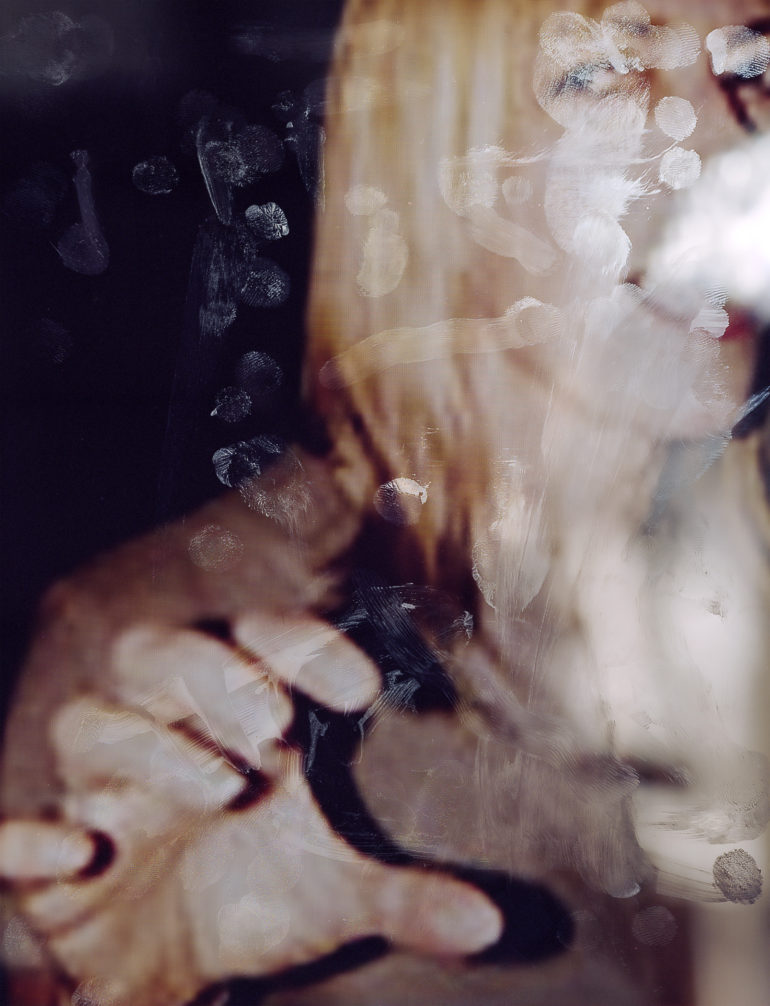
Phoblographer: We’d like to know more about your project and upcoming exhibit, Surface Tension. What sparked the idea for this series?
Soren: I was reading a book on an iPad on a plane and when I was done, I turned the overhead light on. I was struck by all the swipes my fingers had made on the screen. It looked like a Franz Kline painting. I took of picture of the marks on my iPad with my phone. When I read the next five chapters at home, I photographed the marks on the screen with my Hasselblad on black and white film. I made gelatin silver prints in my darkroom that I thought was exquisite.
Three years later, the project looks much different – the images are in color, have a background screen of source material from a web search and are shot with an 8×10 inch view camera. Ultimately, I decided that the sublime pattern in black and white was a useful false start. The pictures that were way too serene and not as modern as I wanted the project to be. The color screens do a better job replicating the agitation I feel in my head when I’ve spent too much time with technology. My work in general is about visually psychological states (Panic Beach = panic attacks, Running = fight or flight response, Fantasy Life = striving to achieve greatness, etc.) so the frenetic nature of technology and the multitasking needed to be represented by more layering, thus changing to the background screen and the many colors.
Phoblographer: Fingerprints and greasy smears on screens of most digital devices are part of our daily lives, but we typically ignore or barely even notice them. What made you decide to make it the centerpiece of this body of work?
Soren: I think that contemporary art is really successful when it gets viewers to look at something they see all the time in a new way. And that’s what the Surface Tension images do. The textural conflicts in these pictures record how we now spend our lives. They’re not just grime; they’re evidence of the otherwise invisible, of what just happened, a map of how we spend our time. I’m also thinking a great deal about simply being human. Never before in history has there been such a tension between people and digital culture. We are human — we’re hairy, oily, messy. On the other hand, our devices are designed to be oleophobic, oil-resistant, and glabrous smooth. In a sense, they deny what is best about us and they trick us into aspiring to the perfection of their design. This may be one of the reasons why we feel low and wiped out after using devices all day to get a myriad of tasks accomplished.
We as humans are living and dying at the same time and so is much of the material world. But digital culture ignores that conflict and can tell us that there is something physically inferior about us — our oils, hair, tears, saliva — but I disagree. On one level, this project is an attempt to remind us that our humanity is beautiful.
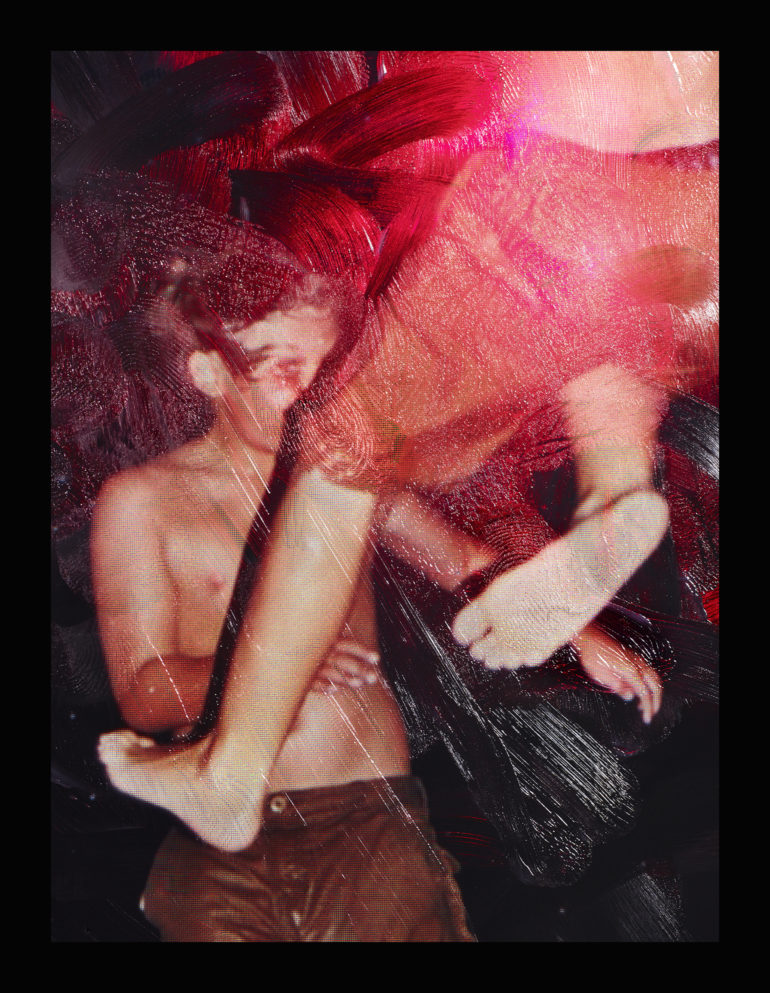
Phoblographer: Surface Tension explores the relationship between technology and the way people “consume” images with it. How did you end up using screens and fingerprints to communicate this this idea and not other media? What made them the most powerful visual devices for you?
Soren: I wanted to stick with machines that we intimately engage with, ones that we TOUCH. Touch is the unsung sense — the one that we depend on most and talk about least. Touch provides its own language of compassion, a language that is essential to what it means to be human. The science of touch convincingly suggests that we’re wired to — we need to — connect with other people on a basic physical level. And yet, we spend an increasing amount of time touching technological devices, specifically, screens.
At the Davis Museum, all the Surface Tension photographs will connect the act of the touching on top of the screens to background pictures that also relate to touch. The haptic language of the fingerprints amplify the meaning of what viewers see behind them. This approach is akin to the cold, matter of fact presentation of the Bernd and Hilla Becher photographs of water towers, furnaces and gas tanks. The style of those typologies perfectly match the stony, emotionless industrial architecture the Bechers are shooting.
Phoblographer: We see the original images appear as painterly versions through this project. What was your thought process like when choosing the photos that were to be transformed in this way?
Soren: I focused on the images where touch was primary. For example, the fck-yeah picture. I have to light the iPad I’m shooting so brightly that there is often a hot spot. Most of the time, this ruins the negative but sometimes it lands in a lucky place. The fck-yeah image also was made on a very clean iPad so there are fewer fingerprints but they are very noticeable.
The very first images created by man were hand prints on the walls of caves. The very last images may well be fingerprints left on screens. Hands are the messengers of emotion and this project gets deeply into that aspect of us. The opposite end of the process was when the iPad was really dirty.
The fingerprints and swipes accumulate into a layer of softness on top of the image. The truthout.org images of the Ferguson, Missouri protests looks almost like an impressionistic painting because of the blurred place on the negative. Some of it is very in focus – otherwise it wouldn’t work. It would look like a mistake without sharp parts of the negative. This dreamy, colorful image, captured by screenshot from a 2014 Ferguson protest video, references the fatal harm done to Michael Brown through the brutal touch of Ferguson police officers. At the Davis show, the 5 feet x 8 feet scale of the print really enhances the power of the image.
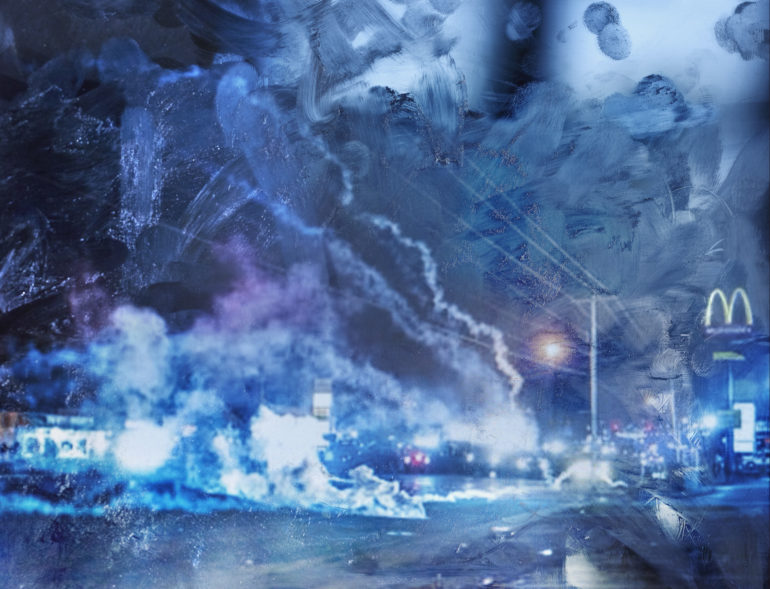
Phoblographer: We’re curious — which piece from this project do you feel resonates most with our current relationship with technology, the Internet, and digital devices?
Soren: It is perhaps perplexing, but the same people who fail to recognize the beauty in front of their nose will respond to its presentation in a photograph. We’re growing accustomed to being served our experience, to having it mediated, before we accept and embrace it as our own. The image above addresses that contemporary issue but it also relates to the fact that human touch causes incremental damage to the very beauty we seek out. The Great Barrier Reef, the Arctic, Greenland, and other places that were once beyond human touch are now succumbing to it.
Phoblographer: Did working on Surface Tension in any way affect or change how you personally see or use technology?
Soren: The consistent, turbulent surface of the photographs foregrounds the anxiety that I feel as we adapt to technological domination. Mistaking the perfection of our devices for the perfection of ourselves relieves us of responsibility of what happens in the world. I sometimes let myself off the hook and think it will just naturally turn out OK, sooner or later. But technology – all kinds, not just screens – can easily outrun our comprehension of what it does to us, even while it incarnates our wishes, fears and pathologies. For example, what could be more pathological than a nuclear weapon? Technology’s impact on all of us is not entirely negative, of course. But it does seem that breaks from digital space might be something we all need to keep fantasy and reality separate. I know I need them.
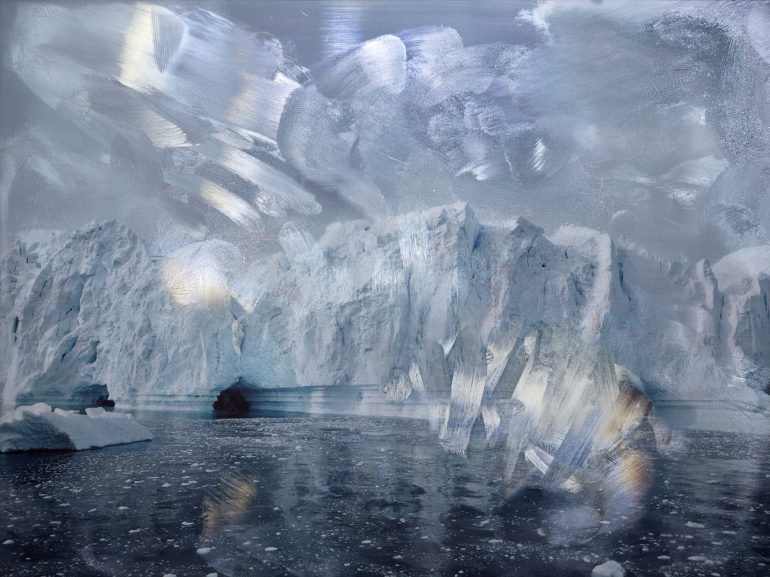
Phoblographer: Which aspect of your photography do you feel makes your work truly your own? How do you make sure it shows in your projects?
Soren: Texture is something that is very important to all my projects. You can see it in the tintypes, the fingerprints in the Surface Tension images and in my upcoming project, in which I’m turning 2D photographs into 3D reliefs. The subject matter from project to project varies but the psychological focus and the foregrounding of texture is consistent.
Phoblographer: Lastly, what for you makes a photo or photography project compelling?
Soren: For me, the main reason to make art is express something in a new way or make something that hasn’t been seen before. It’s a very difficult thing to do and I fail 90% of the time. Every picture has been taken. So, now what are you going to do with your camera? I have to go beyond snapping the shutter. That’s merely the first step. You just have to keep working and trust that 10% you will be successful in reinventing the wheel and that all that time will be worth it. I believe that all of us are born artists. It’s just that some of us quit.
Check out Tabitha Soren’s website to see more of Surface Tension and her other projects, as well as the Davis Museum announcement for more details on the exhibit.


